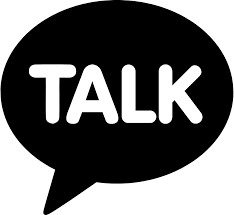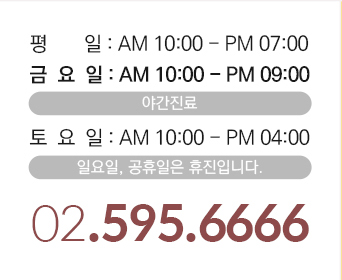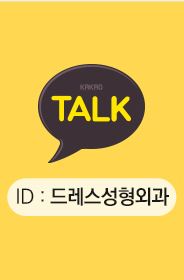10 Healthy Habits To Use The Different Types of Personality Tests
작성일 22-10-16 10:08
페이지 정보
작성자Katie 조회 18회 댓글 0건본문
A personality test is a method to evaluate a person's personality. These tests can be self-report questionnaires or reports from life records. There are some differences between personality tests. A personality test is a good way to understand the person you are testing. However, it is best to seek out an expert who is experienced with these tests. This will ensure that the test you choose to take is suitable for you.
Self-report inventories
Self-report inventories on personality tests are frequently used to determine the personality of an individual. These tests typically comprise multiple-choice questions and scales with numbers. They are referred to as Likert scales and were designed by Rensis Likert (an English psychologist) who came up with them in the 1930s. They are simple to use and cost-effective. However, they can yield inaccurate results since participants typically give answers that are not indicative of their personalities.
Self-report inventories are usually long and tedious. Certain tests, like the Minnesota Multiphasic Personality Inventory, can take as long as three hours to complete. Respondents can lose interest or fail to answer all questions correctly because of this. Additionally, people are not the most accurate judge of their own behavior, and they may attempt to conceal their opinions or emotions.
Self-report inventories and personality tests are useful tools to help people get to know themselves better. They can help people determine the appropriate career or role for them. They can also be used for assessing potential job opportunities, such an opportunity in the field of software development. These areas require creativity and analysis and therefore could be a good fit to creative thinkers.
Self-report inventories are often developed using psychometric methods. This methodological approach studies the reliability, validity and consistency of responses given by test takers. They can also be used to identify patterns of positive and negative responses. They also can help predict future behavior. They can also provide the results of a scientific laboratory.
One of the major challenges of self-report personality tests is the possibility of faking. People can alter their responses to fit their social status. This is why a lot of test providers include an assessment of the likelihood of lying. This helps test makers lessen the effects of social desirability bias.
MBTI
The MBTI personality test assesses how an individual collects information. The S group relies on their senses to discover facts and information about the world, whereas the N group relies on intuition to find information and facts. People who use intuition are more analytical and rely on their intuitions to understand abstract concepts and the patterns and patterns they observe within their immediate environment.
The MBTI test assists human resource professionals to match employees to jobs and work environments. They can also use it to identify candidates who fit well into the company's culture. They are able to better understand the personalities, sloan work pressures, and focus capabilities of their employees. For this reason, the MBTI is an important tool for HR managers.
Some people question the validity of MBTI tests because they lack scientific proof. Although it has been used in the corporate sector for decades, psychologists and professional psychologists have raised questions about its reliability. They also point out that people might get different results if taking the test twice. This is a disappointing outcome in comparison to the 70-90% accuracy that is generally accepted by scientists. Some people feel that the MBTI test is not accurate enough to show a person's character.
The MBTI personality test can be divided into two parts. There are 60 questions to be answered. The first part of the test consists of questions that test a person's knowledge about their opposite personality. Five alternatives are presented for each question. The second section is comprised of questions that the participants must evaluate according to the degree to which they relate to their current personality. The results are sent to the participant's email address. The MBTI test does not provide any diagnosis of mental health, but can provide insight into an employee's personality.
DiSC
A DiSC personality test assesses a person's personality on eight different scales. The top scores indicate the best personality type. However, those with high scores can display elements of other types of. For instance, people who have a high D style often place a high value on competition, achievement, and success. These people are competitive and prefer to be in control.
The DiSC personality Tritype test isn't able to give you an accurate picture of your personality. The assessment is designed to test four primary traits that enable you to communicate more efficiently and Tritype test make better decisions. It was invented by William Moulton Marston, a psychologist. He described four basic ways of being in his 1928 book "The Emotions of Normal People". This research forms the basis of the DISC personality test results. The DiSC personality test can help you better know yourself and others.
The test is completely anonymous. The test's initial section has eight questions. Each question has four possible answers. You'll be asked to pick those that match your personality. In the next section you'll be asked to answer two more questions. If you'd like to examine the results, you can buy an even more comprehensive report.
People with a high I style enjoy socializing by interacting with others and building good relationships. People who have a High S style, on the other hand are calm, systematic and analytical. They are patient with their colleagues and concentrate on the specifics of their tasks.
Dimensions
The dimensions of the personality test is a scientifically validated measurement of the individual differences. It measures sexuality attitudes and gender stereotypes. Although the test may not take into account all aspects of sexual attitudes but its reliability and validity have been repeatedly demonstrated. Its validity has been confirmed by other researchers. Its dimensions are:
The extroversion-introversion dimension has both a genetic and neurophysiological basis. Extroverts have more active behavioral activation systems (BASs), which influence their behavior towards situations that provide them with rewards. These characteristics are the basis for their positive and alignment system energetic personalities. A high BAS activity is also associated with a high level optimism and a desire to have fun.
The openness aspect is an indication of a person's willingness to learn from others. This is a great trait for companies with rapid growth, since it means they are apt to make changes in order to improve their processes. On the other hand, those with low openness are more sceptical and demanding. These traits can be problematic in general but they can be helpful in situations of information seeking. For example If a person is a highly conscientious person, this quality could be a huge advantage in their job search.
A person's personality can change throughout their lifetime. Certain aspects of personality such as self-control, neuroticism, and sociability, stay the same. However, there are variations between these aspects in older adults. Older adults are more accepting and less neurotic. This is the same for other aspects of personality.
When a person is able to pass an assessment of their personality they will receive scores for five traits. The score is a measure of how they rank against others within their group of peers. Some tests display scores as a series of numbers or letters, while others utilize the decimal system. Each letter corresponds to one of the dimensions. The numbers represent the percentage of those who scored less than you.
enneagram test
The Enneagram personality test is a method to determine a person's personality type. It is a tool that has been around for a long time, and has been utilized in a variety applications since the 1960s. It can be used to better understand their own and other people, and to improve relationships and communication. There are three main types and a myriad of subtypes as well as triadic styles. It is beneficial to improve your personal development and education counseling, parenting, and for Tritype Test many other purposes.
However there are a lot of concerns with the enneagram test personality test. It is very easy to fake results, and it's difficult to use it to determine a person's performance in the workplace. This means that managers should avoid using it to make hiring decisions. Additionally, the results may be inaccurate or biased.
Enneagram tests can be fun and exciting ways to learn more about yourself. The test will force you to look at yourself in a different way which will help you determine the best method of dealing with problems in your life. This test is not a scientific tool and is not designed to be taken too seriously. This test is a fantastic beginning step towards a deeper understanding of your personality. It could help you make important decisions in your daily life.
In addition to the Enneagram personality test, you will find numerous resources on the internet to help you discover your personal personality. You can also find books and articles that can aid you in understanding your personality type.
Self-report inventories
Self-report inventories on personality tests are frequently used to determine the personality of an individual. These tests typically comprise multiple-choice questions and scales with numbers. They are referred to as Likert scales and were designed by Rensis Likert (an English psychologist) who came up with them in the 1930s. They are simple to use and cost-effective. However, they can yield inaccurate results since participants typically give answers that are not indicative of their personalities.
Self-report inventories are usually long and tedious. Certain tests, like the Minnesota Multiphasic Personality Inventory, can take as long as three hours to complete. Respondents can lose interest or fail to answer all questions correctly because of this. Additionally, people are not the most accurate judge of their own behavior, and they may attempt to conceal their opinions or emotions.
Self-report inventories and personality tests are useful tools to help people get to know themselves better. They can help people determine the appropriate career or role for them. They can also be used for assessing potential job opportunities, such an opportunity in the field of software development. These areas require creativity and analysis and therefore could be a good fit to creative thinkers.
Self-report inventories are often developed using psychometric methods. This methodological approach studies the reliability, validity and consistency of responses given by test takers. They can also be used to identify patterns of positive and negative responses. They also can help predict future behavior. They can also provide the results of a scientific laboratory.
One of the major challenges of self-report personality tests is the possibility of faking. People can alter their responses to fit their social status. This is why a lot of test providers include an assessment of the likelihood of lying. This helps test makers lessen the effects of social desirability bias.
MBTI
The MBTI personality test assesses how an individual collects information. The S group relies on their senses to discover facts and information about the world, whereas the N group relies on intuition to find information and facts. People who use intuition are more analytical and rely on their intuitions to understand abstract concepts and the patterns and patterns they observe within their immediate environment.
The MBTI test assists human resource professionals to match employees to jobs and work environments. They can also use it to identify candidates who fit well into the company's culture. They are able to better understand the personalities, sloan work pressures, and focus capabilities of their employees. For this reason, the MBTI is an important tool for HR managers.
Some people question the validity of MBTI tests because they lack scientific proof. Although it has been used in the corporate sector for decades, psychologists and professional psychologists have raised questions about its reliability. They also point out that people might get different results if taking the test twice. This is a disappointing outcome in comparison to the 70-90% accuracy that is generally accepted by scientists. Some people feel that the MBTI test is not accurate enough to show a person's character.
The MBTI personality test can be divided into two parts. There are 60 questions to be answered. The first part of the test consists of questions that test a person's knowledge about their opposite personality. Five alternatives are presented for each question. The second section is comprised of questions that the participants must evaluate according to the degree to which they relate to their current personality. The results are sent to the participant's email address. The MBTI test does not provide any diagnosis of mental health, but can provide insight into an employee's personality.
DiSC
A DiSC personality test assesses a person's personality on eight different scales. The top scores indicate the best personality type. However, those with high scores can display elements of other types of. For instance, people who have a high D style often place a high value on competition, achievement, and success. These people are competitive and prefer to be in control.
The DiSC personality Tritype test isn't able to give you an accurate picture of your personality. The assessment is designed to test four primary traits that enable you to communicate more efficiently and Tritype test make better decisions. It was invented by William Moulton Marston, a psychologist. He described four basic ways of being in his 1928 book "The Emotions of Normal People". This research forms the basis of the DISC personality test results. The DiSC personality test can help you better know yourself and others.
The test is completely anonymous. The test's initial section has eight questions. Each question has four possible answers. You'll be asked to pick those that match your personality. In the next section you'll be asked to answer two more questions. If you'd like to examine the results, you can buy an even more comprehensive report.
People with a high I style enjoy socializing by interacting with others and building good relationships. People who have a High S style, on the other hand are calm, systematic and analytical. They are patient with their colleagues and concentrate on the specifics of their tasks.
Dimensions
The dimensions of the personality test is a scientifically validated measurement of the individual differences. It measures sexuality attitudes and gender stereotypes. Although the test may not take into account all aspects of sexual attitudes but its reliability and validity have been repeatedly demonstrated. Its validity has been confirmed by other researchers. Its dimensions are:
The extroversion-introversion dimension has both a genetic and neurophysiological basis. Extroverts have more active behavioral activation systems (BASs), which influence their behavior towards situations that provide them with rewards. These characteristics are the basis for their positive and alignment system energetic personalities. A high BAS activity is also associated with a high level optimism and a desire to have fun.
The openness aspect is an indication of a person's willingness to learn from others. This is a great trait for companies with rapid growth, since it means they are apt to make changes in order to improve their processes. On the other hand, those with low openness are more sceptical and demanding. These traits can be problematic in general but they can be helpful in situations of information seeking. For example If a person is a highly conscientious person, this quality could be a huge advantage in their job search.
A person's personality can change throughout their lifetime. Certain aspects of personality such as self-control, neuroticism, and sociability, stay the same. However, there are variations between these aspects in older adults. Older adults are more accepting and less neurotic. This is the same for other aspects of personality.
When a person is able to pass an assessment of their personality they will receive scores for five traits. The score is a measure of how they rank against others within their group of peers. Some tests display scores as a series of numbers or letters, while others utilize the decimal system. Each letter corresponds to one of the dimensions. The numbers represent the percentage of those who scored less than you.
enneagram test
The Enneagram personality test is a method to determine a person's personality type. It is a tool that has been around for a long time, and has been utilized in a variety applications since the 1960s. It can be used to better understand their own and other people, and to improve relationships and communication. There are three main types and a myriad of subtypes as well as triadic styles. It is beneficial to improve your personal development and education counseling, parenting, and for Tritype Test many other purposes.
However there are a lot of concerns with the enneagram test personality test. It is very easy to fake results, and it's difficult to use it to determine a person's performance in the workplace. This means that managers should avoid using it to make hiring decisions. Additionally, the results may be inaccurate or biased.
Enneagram tests can be fun and exciting ways to learn more about yourself. The test will force you to look at yourself in a different way which will help you determine the best method of dealing with problems in your life. This test is not a scientific tool and is not designed to be taken too seriously. This test is a fantastic beginning step towards a deeper understanding of your personality. It could help you make important decisions in your daily life.
In addition to the Enneagram personality test, you will find numerous resources on the internet to help you discover your personal personality. You can also find books and articles that can aid you in understanding your personality type.
댓글목록
등록된 댓글이 없습니다.








